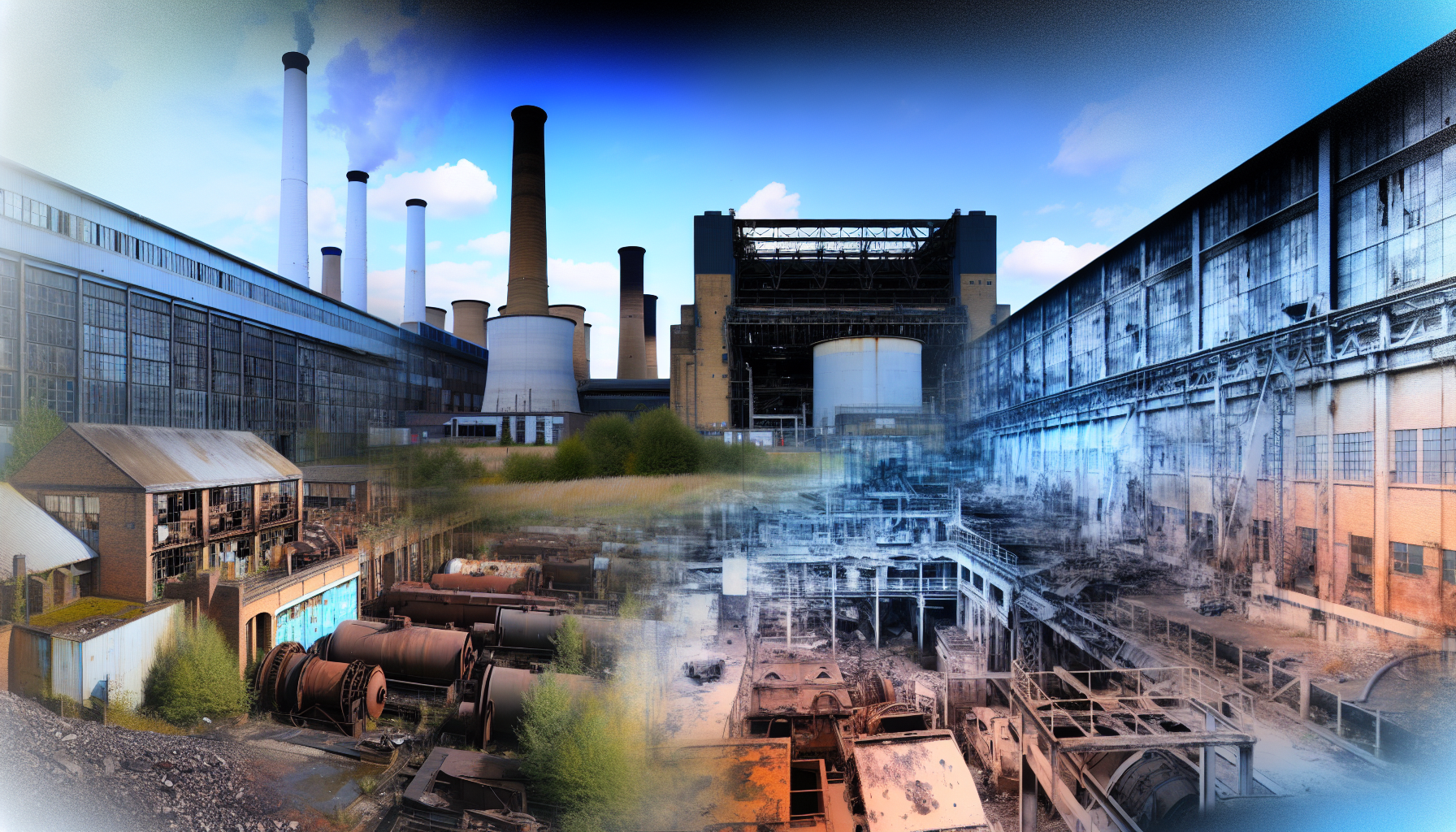The once humming corridors of production lay silent now, victims of a voracious appetite for progress that ultimately consumed itself. The engines of prosperity have ground to a halt, and all that remains are the carcasses of what were once considered temples of the industrial age. In this exploration, we delve into the skeletal remains of abandoned industrial sites, a grim exhibit of an ecology devoured by its neglect – a tangible warning in our Anthology of Rust.
Here, time has a different metric, and the air clings with the heavy scent of decay. Each rusted beam and each crumbling wall tells the narrative of a relentless pursuit for more that ended in less for all, where the once steely blue skies now drape a perpetual grey.
The Bellowing Giants, these towering derelicts of the manufacturing world, are now beacons of desolation, quiet monoliths standing over barren wastelands. Sites like the Wilton Power Station in the UK, its turbines forever at rest, speak volumes of an age when fossil fuels were king, and the shroud of pollution was worn like a mantle of progress.
Our expedition takes us further to the skeletal outlines of the Detroit automobile factories in the USA, their broken windows a mosaic of shattered dreams. Inside, the remnants of conveyor belts hang limply like the tired limbs of a civilization spent. The echo of the once vibrant labour force has been replaced with the eerie chorus of the wind whistling through the fractured glass panes.
Across the pond, the rusting hulks of shipyards in Northern Spain, lay like beached whales, their cargo holds empty, dry docks devoid of purpose. Once a proud maritime culture, they now serve only as a testament to a bygone era of seafaring dominance, and a stark reminder of the waves of change that came too fast for any vessel to weather.
In Ruhr Valley, Germany, the vast complexes of steel mills and coal mines, once the beating heart of Europe’s industrial powerhouse, have now subsided into a quiet slumber from which they will never awaken. The iron men who toiled here are just memories, their legacy etched in the corroded metal and crumbling bricks.
Reflections of the Present – These places are more than just the physical remnants of industrial aspiration; they symbolize the unwavering pursuit of an unsustainable lifestyle. They serve as museums of folly, displaying the artifacts of a civilization that failed to account for its environmental impact, leading to their ultimate abandonment.
The poignancy of these sites is undeniable, revealing compelling stories of the workers, their families, and the communities that once depended on them. And yet, now, they stand as monuments to a careless past and a warning of a potentially bleak future.
This anthology, although dark, is not without purpose. It is a rallying cry, a cacophony of metal groans and concrete sighs that implores us to heed the lessons written in its pages of rust– to understand that the lust for growth, untempered by sustainability, hurls us towards a similar fate. As we lay witness to these industrial graveyards, we cannot ignore the ominous reverberations they cast upon our current trajectory.
Join us in the next exploration of ruins of excess, stories from around the globe that resonate the echoes of a world in peril. Will we listen, or shall we turn the page, blissfully ignorant of the consequences inscribed in the annals of rust?
